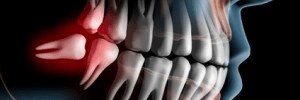Dentistry, as a profession, is really evolving. Long gone are the days of guessing when it comes to patient diagnosis and treatment. Dentists used to use only simple 2d x-rays and their own knowledge base to correctly diagnose and treat a patient. Sometimes these methods were accurate but at other times, patient care was compromised simply because there was no way to know better.
These days, dentists have many technology based tools to help improve patient care, and more importantly, improve outcomes. Dental care is becoming more predictable and more bold in what dentists can accomplish given a mouthful of cavities or a severely broken down tooth.
An example of newer technology in dentistry is the dental cone beam computed tomography (CT). This is a special type of x-ray equipment that can give a dentist a mountain of information. There are specific dental radiologists that dentists can contract with who read these scans in their entirety and help point out important pieces of information.
The images produced by the CT scan are 3D and look much like a virtual tour of the head and neck region. Dentists can see the teeth, the bone, the gums, even the nerves of your teeth with a dental CT scan. These scans help in the evaluation of the jaw, teeth, bones, sinuses and nose.
Endodonits, or root canal specialists, can use these scans while performing root canals to visualize the entirety of the nerve pathway of the tooth. Orthodontists, or braces specialists, use CT scans to help visualize where exactly an out of place tooth is. General dentists can use the scans to help plan where to place a dental implant and look at pathology. Oral surgeon use the CT scan to avoid nerve damage during extractions among other things.
There are many uses for such scans. They are not as helpful as a traditional CT scan when it comes to soft tissue or lymph nodes but for dental purposes, in an outpatient setting, they are extremely helpful.
As with everything, however, there are drawbacks to this technology. One of these is cost. Not every dental office has invested in this technology as the cost of such machines is hefty. Also, dentist do not try to routinely scan patients with this machine, although the information they can gain is great, the difference in amount of radiation in comparison to a traditional x-ray is significant.
Overall, dental CT scanners have added to the predictability and quality of dental care. It won’t be too long before the standard of care will dictate that most patients will undergo a CT scan once in their dental office experience.


